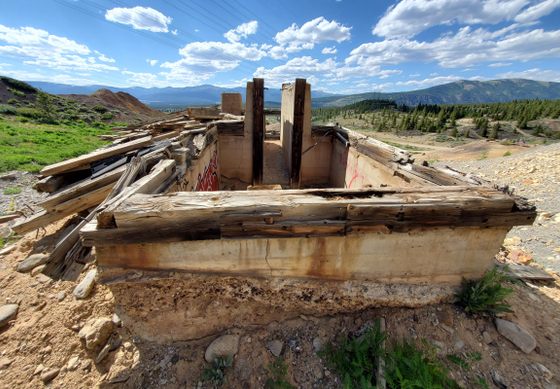Nestled high in the heart of the Colorado Rockies, the historic town of Leadville is known for its breathtaking mountain vistas, rich mining history, and tales of the Wild West. Among the many remnants of Leadville’s mining heyday, the abandoned silver mine holds a special place in the region’s history. This article delves into the intriguing past and the enduring legacy of Leadville’s abandoned silver mine. Leadville’s history is intricately tied to the mining industry, particularly silver and lead mining. Founded in 1877, the town quickly became one of the most productive mining centers in the United States, attracting prospectors and fortune-seekers from all over. It wasn’t long before Leadville was home to countless mines, with the rich silver ore veins proving to be the lifeblood of the town’s prosperity.

The story of Leadville’s abandoned silver mine begins with a prospector’s discovery that would change the fortunes of the town. In 1877, prospector Horace Tabor uncovered a rich silver deposit near what is now known as Fryer Hill. This discovery led to the formation of the Little Pittsburg Mine, a silver mine that would become one of the most prominent in the region. The Little Pittsburg Mine quickly transformed into a bustling hub of mining activity. With the investment of experienced miners and financiers like August R. Meyer and David H. Moffat, the mine’s operations expanded, leading to unprecedented silver production. At its peak, the Little Pittsburg Mine employed hundreds of miners, and its wealth was reflected in the grandeur of its surroundings. Ornate Victorian mansions, opulent saloons, and theaters lined the streets of Leadville as a testament to the prosperity brought about by the silver boom.

The late 19th century brought economic turbulence to Leadville and its mines. In the 1890s, the United States experienced the Panic of 1893, a severe economic depression. The price of silver plummeted, and mining operations in Leadville faced devastating consequences. Many mines were forced to shut down, including the once-mighty Little Pittsburg Mine. As the price of silver continued to decline, the Little Pittsburg Mine struggled to stay afloat. By the early 1900s, the mine was abandoned, leaving behind a vast network of tunnels, shafts, and structures that had once held the hopes and dreams of a prosperous future. The town of Leadville, too, felt the effects of the silver crash, and it took many years for the community to recover and diversify its economy. Today, Leadville’s abandoned silver mine stands as a testament to the bygone era of silver mining in Colorado. While many of the buildings associated with the Little Pittsburg Mine have crumbled over time, some structures and shafts still exist. The mine site has piqued the interest of historians, explorers, and adventurers, who seek to uncover the secrets hidden beneath the earth.

Efforts have been made to preserve the memory of the abandoned silver mine. Local historical societies and organizations work tirelessly to maintain the remnants of the Little Pittsburg Mine and to educate the public about Leadville’s mining heritage. Guided tours and interpretive exhibits allow visitors to step back in time and gain a deeper understanding of the challenges and triumphs of the town’s early settlers. Leadville’s abandoned silver mine stands as a poignant symbol of the rise and fall of the American silver mining industry. The Little Pittsburg Mine and its legacy remind us of the indomitable spirit of those who sought their fortunes in the rugged mountains of Colorado during the late 19th century. In the present day, Leadville’s historic mine site continues to capture the imagination of those who appreciate the history, heritage, and pioneering spirit of the Old West. It is a place where the echoes of the past still resonate, inviting us to remember the stories of those who once toiled in search of the “white metal” that shaped the destiny of this remarkable mountain town.
